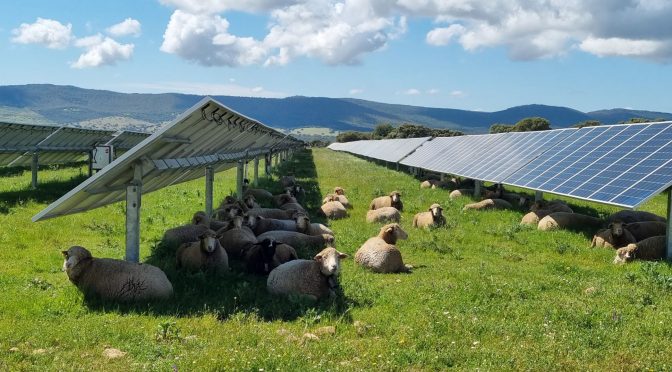Greater yield from the land, more efficient use and saving of resources, the chance to breathe new life into abandoned land: the synergy between agriculture and ground-mounted photovoltaic systems offers many advantages to the agricultural world.
Greater yield from the land, less water consumption for irrigation, the pursuit of energy independence and the revitalization of farming activities in areas that are currently low in profitability: these are only some of the benefits linked to the synergy between agricultural production and energy production. The integration of agriculture with standard photovoltaic systems gives rise to positive effects and generates mutual benefits, for crop cultivation and for the production of solar energy.
The first to benefit from these advantages are farmers, for whom agrivoltaics can prove to be an invaluable ally, even in economic terms, because additional income resulting from crop management integrated with renewable projects can then be reinvested in agricultural enterprises.
Higher income and better performance
When we talk about agrivoltaics, we mean a large-scale photovoltaic system, with structures that support the photovoltaic modules at a height of about 2-2.5 meters. These modules are located on land where agricultural or livestock farming can also be developed, with complete integration and synergy between electricity and agriculture. This model therefore enables agriculture and sustainable energy to coexist and generates extra income for farmers. Several tests, carried out at plants in Spain, Greece, Australia and the United States, have shown an increase in productivity on land where agrivoltaic systems are present.
Thanks to agrivoltaics, farms improve their performance. First of all, water consumption can decrease by up to 20% as a result of partial and intermittent shading of the photovoltaic modules. In this way, the soil retains more moisture and the crops are protected from excessive sunlight especially during the hottest hours of the day.
In addition, the use of high-tech sensors makes agrivoltaics a platform for enabling sustainable and efficient agricultural practices, because they supply useful information to improve farming. For example, the monitoring of nutrients provides data on the use of water and fertilizers, increasing the competitiveness of farms.
Agrivoltaics in alliance with the environment
As a general rule, the crops that reap the most benefits from the synergy between agriculture and photovoltaic systems are low-medium crops, such as aromatic herbs like rosemary, sage and green tea; vegetables like peppers, eggplants and zucchini; forage plants; fruit like strawberries or dragon fruit; and succulent plants like aloe vera that are grown for cosmetics or pharmaceutical use.
Many advantages have been reported for these plants. On the one hand, tests have highlighted an increase in yield from 20% to 60% in the land used for photovoltaic systems. On the other, some varieties of these plants, such as forage, aromatic and medicinal, are strategically selected in order to help create a suitable habitat for pollinating insects, whose activity brings benefits to the whole agricultural ecosystem and protects biodiversity. In the livestock sector, the integration of sheep farming is now a common practice, due to its strong compatibility and non-interference with the photovoltaic system.
Revitalizing the land
Building an agrivoltaic system is certainly one way to counteract abandonment of land; what’s more, agrivoltaics can also offer new opportunities for social development for the entire community. In particular, this can be achieved through the involvement of experts in the field, for example agronomists and agricultural enterprises, as well as universities and research centers, in order to promote new opportunities and ways to collaborate.
A further example of this approach is the project in our photovoltaic park in Vamvakies, Greece, set up in collaboration with the non-profit organizations Wise Greece and CluBE. The project, which won the “Bravo Sustainability Award”, offered a group of unemployed local women the opportunity to become food producers by cultivating the land around the solar panels, becoming the first example of agrivoltaics of this type in Greece. Furthermore, the initiative also had an educational and social role, providing free courses in the area around Kozani for potential entrepreneurs who wanted to acquire digital and marketing skills. Thanks to the project, it was therefore possible to support the communities, creating concrete opportunities for employment and professional growth.


